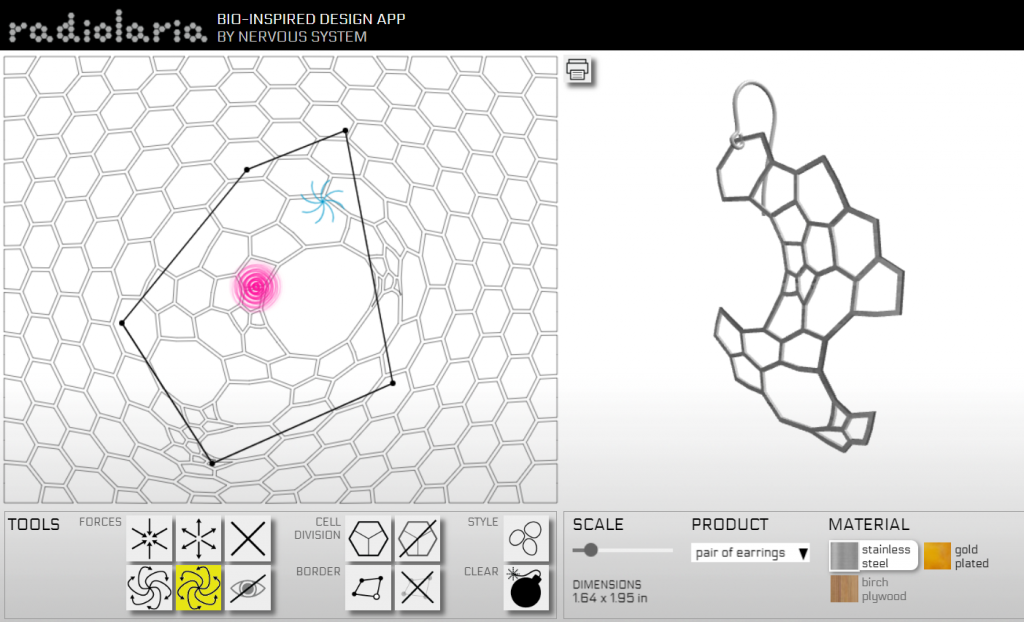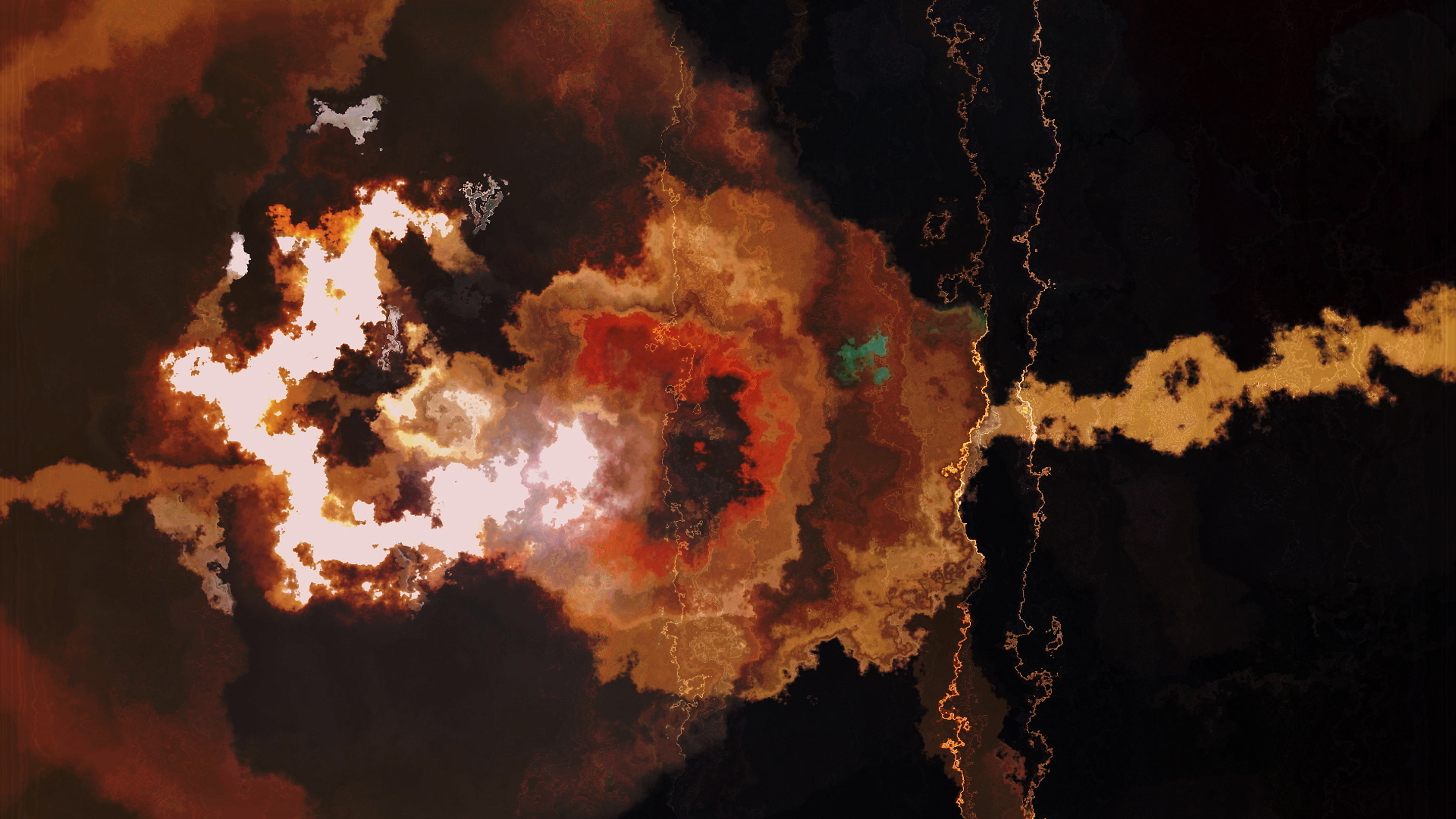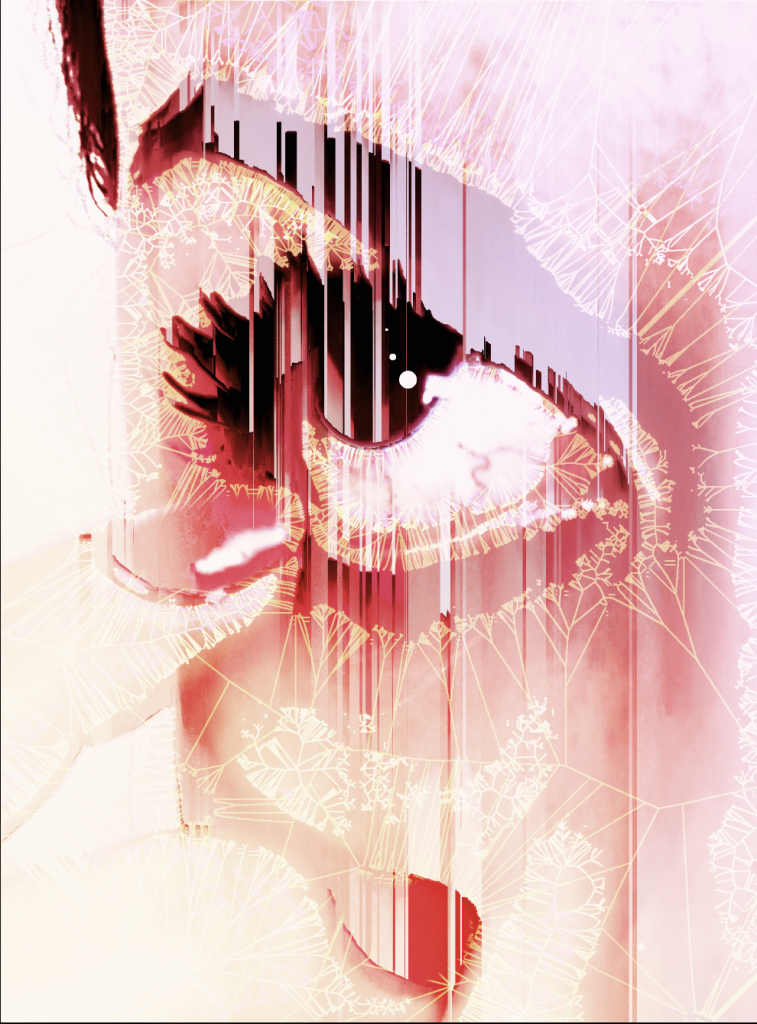
Section D
Evette LaComb
Nervous System – Jessica Rosenkrantz
- Regarding the project, what do you admire about it, and why do you admire these aspects of it?
- The company states they are, “a generative design studio that works at the intersection of science, art and technology”. They have several concepts highlighted on their site, but many utilize an interactive program to create one of a kind jewelry pieces for the customers. The first item I looked at was a custom earring made out of a honeycomb structure. The program allowed me to choose the outline of the cells, divide the cells, as well as apply “forces” that swirled and manipulated the cells further. What I admire most is how they allow the customer to have a creative hand in the final product they are receiving. The concept not only spreads the work of the creator, Jessica Rosenkrantz, or that of the program alone, but the interaction between the three.
- What do you know (or what do you suppose) about the algorithm that generated the work?
- I would guess the program I interacted with used a visual generation system. The forces probably manipulated the arks and positions of the visual features to some mathematical formula. The Interface interacted with the human to change variables in the code that displayed the final product generated on the side display.
- In what ways are the creator’s artistic sensibilities manifest in their algorithm?
- Jessica Rosenkrantz, is credited as the founder. From looking at the work on the site, I think there’s a clear inspiration from the interaction of computational and organic creation. The designs are based on grid systems that end up looking almost like a ptree dish, or growing plant. In particular one of their projects was originally developed to simulate the generation of veins in leaves, and later became a tool for art.
https://n-e-r-v-o-u-s.com/projects/sets/networks/
![[OLD SEMESTER] 15-104 • Introduction to Computing for Creative Practice](../../../../wp-content/uploads/2023/09/stop-banner.png)




